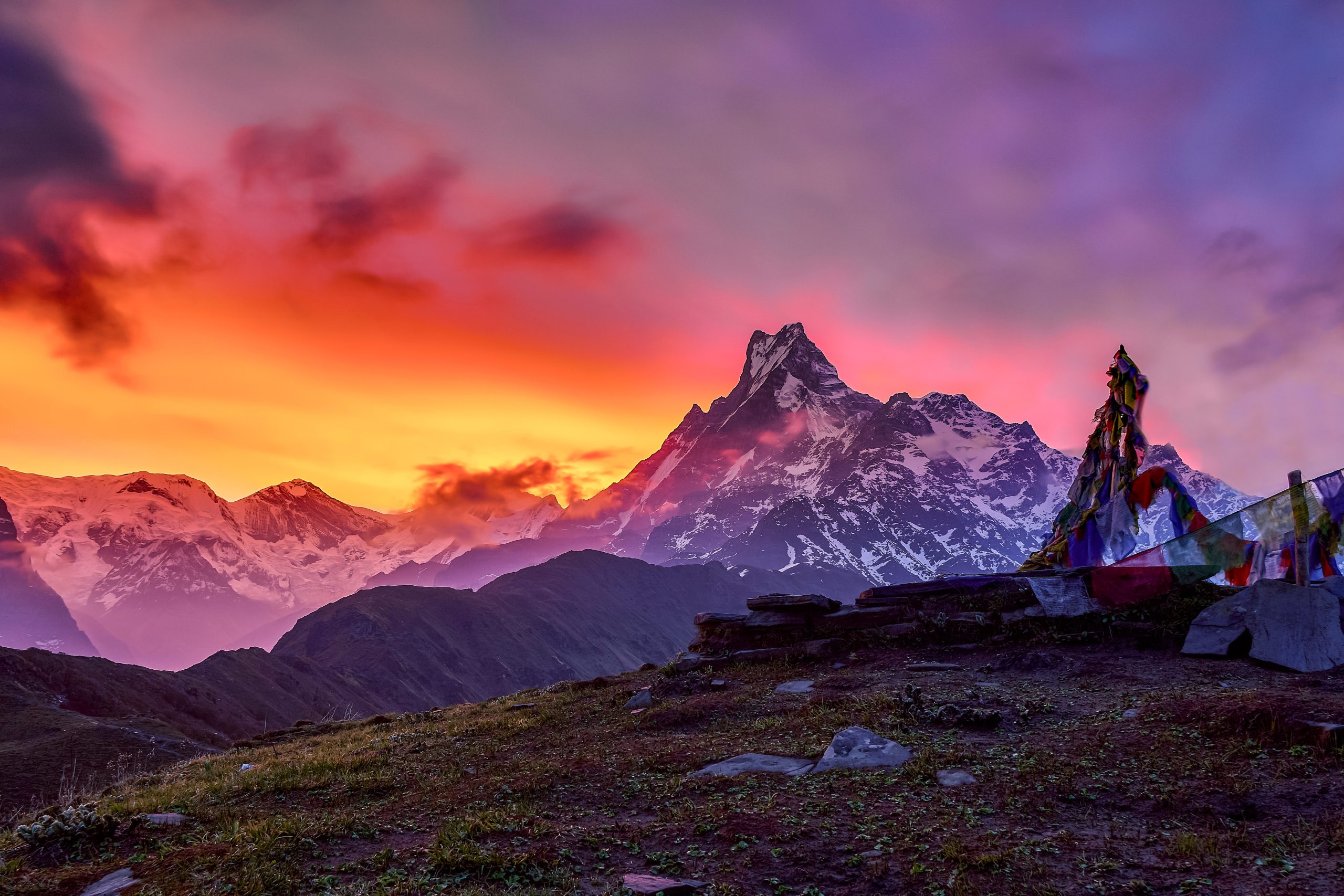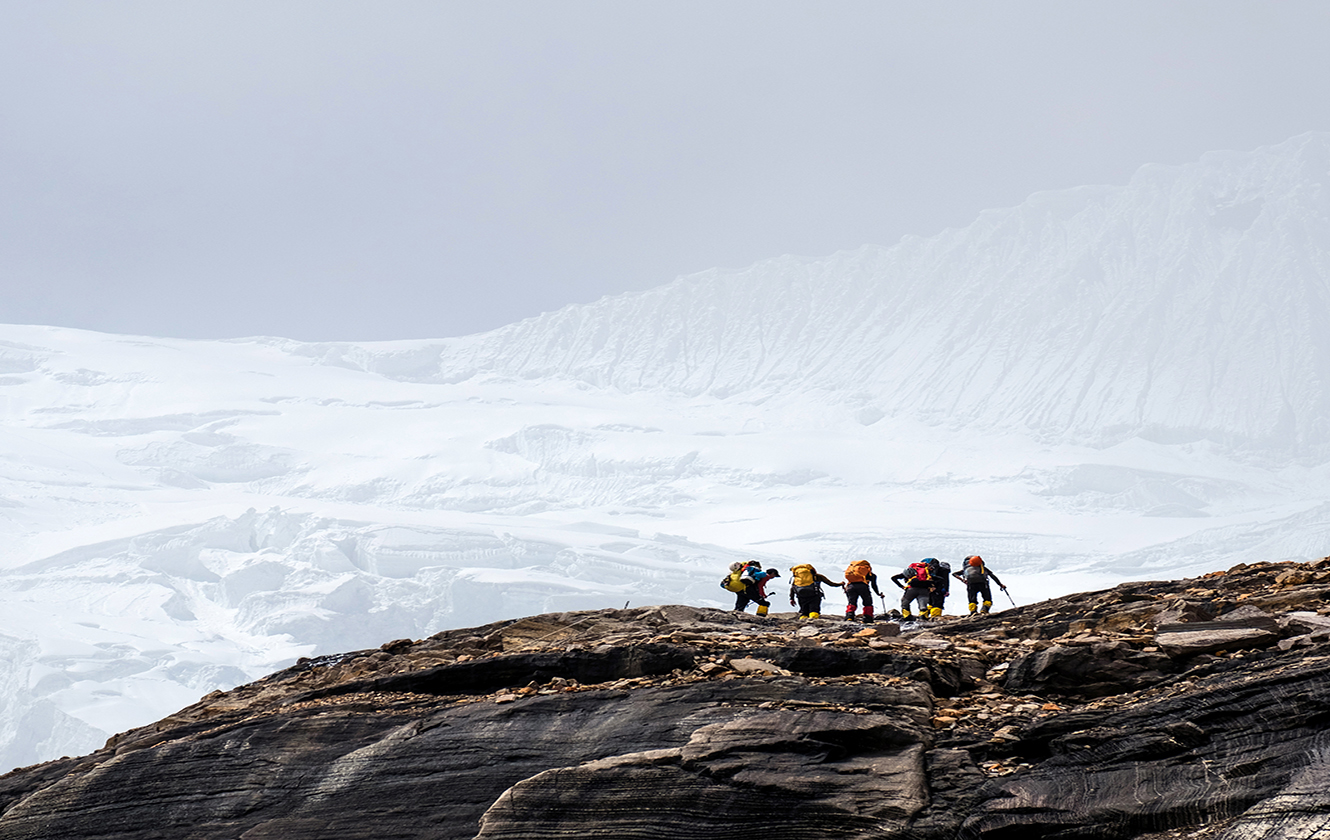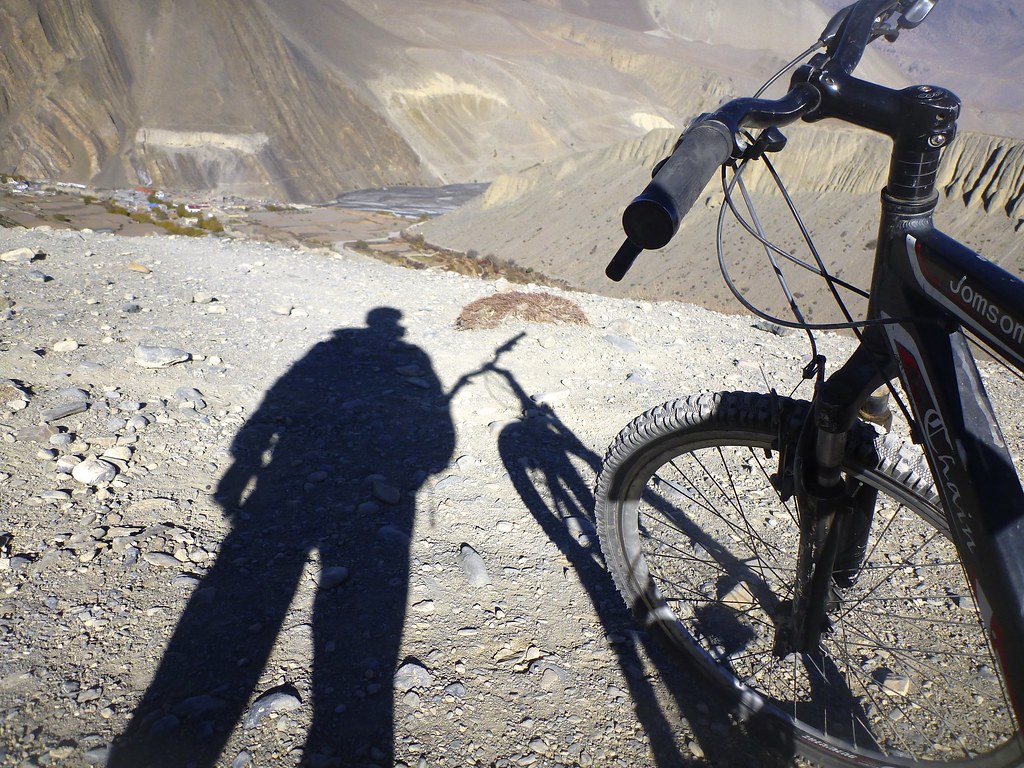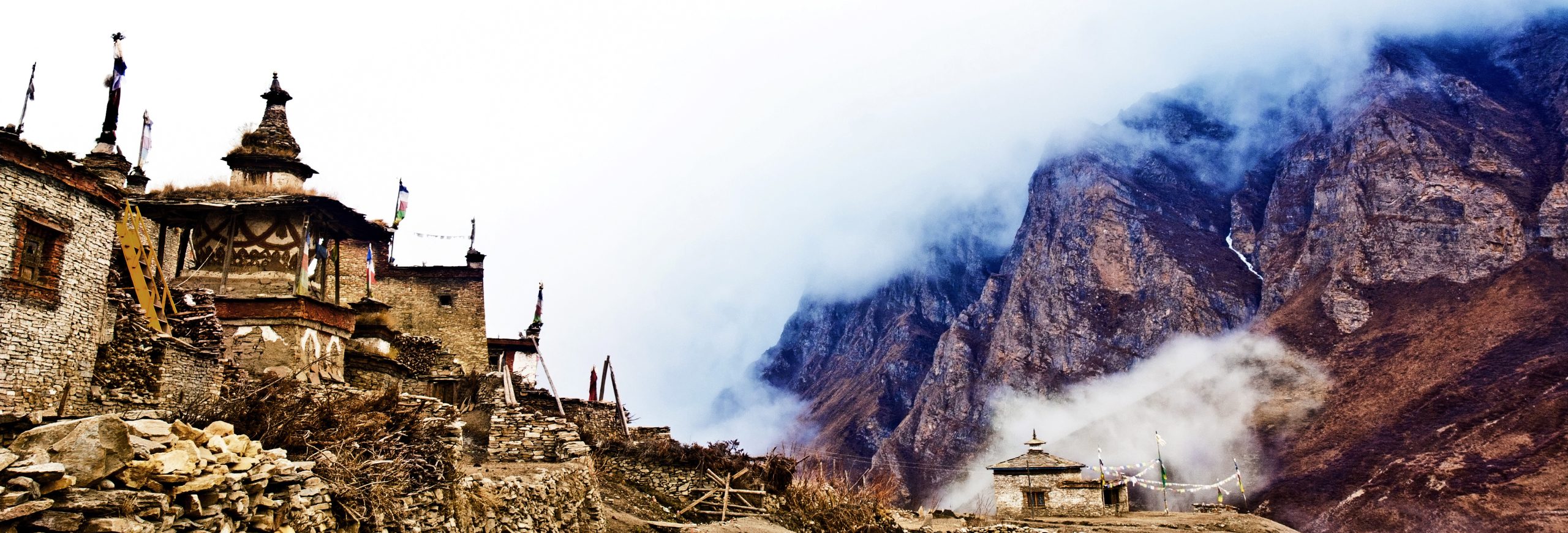
Trekking in Nar and Phu Valley
Experience the magic of Mystery
- Home /
- Nepal /
- Trekking & Hiking /
- Annapurna Region /
- Trekking in Nar and Phu Valley
The Nar and Phu valleys are newly opened, spectacular regions of ethnically-Tibetan inhabitants for those of you that think you have trekked it all. This is a trek that combines high peaks and passes, glaciers, remote villages, narrow canyons, lovely forests, amazing rock formations, yaks, gompas and unique Himalayan cultures.
Trekking the standard Annapurna circuit, the bridge leading over the Marshyangdi River to the steep portals of the Nar Phu valley system is easily missed, but although the entrance is narrow and forested, the valley system above opens up to a huge expanse of high snow-peaks, ancient villages and high altitude grazing settlements. Two long days of walking from the border of Tibet, this region was first explored by Tillman in the 1950s. Closed to trekkers until late 2002, very few westerners have explored these virtually untouched villages or climbed the many 7000m peaks surrounding it. We will venture into this remote region of Upper Manang, camping along the way at the winter settlement of Nar and Phu, and visit some of the most unvisited and most interesting villages in the Tibetan Buddhist world. Buddhist pilgrims from around Nepal might accompany us up to Phu to visit the renowned Tashi Lhakhang Gompa and receive a blessing from Lama Karma Sonam Rimpoche. Along with spending plenty of time at these colorful and timeless villages, we explore the high alpine valleys above Phu.
Route Map
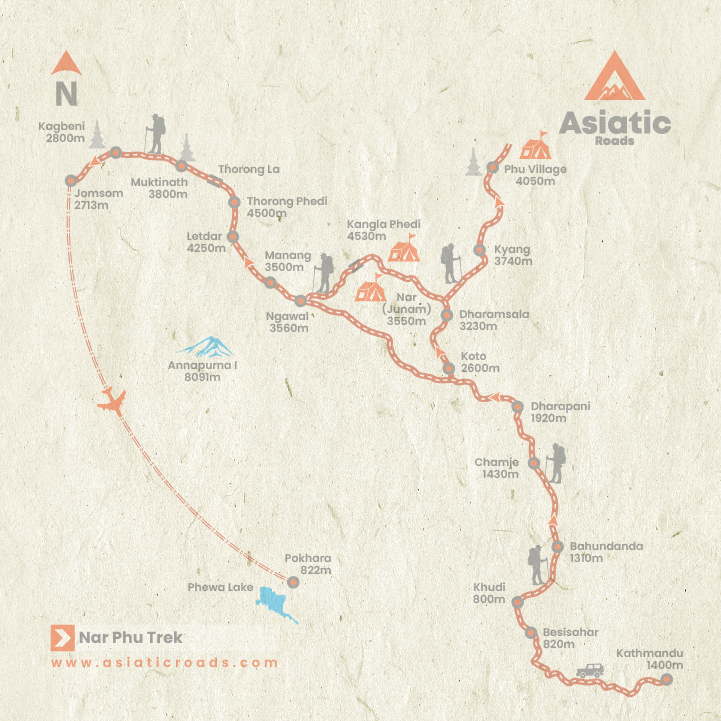
Itinerary In Detail
-
Day 01: Arrival in Kathmandu (1,400 m / 4,592 ft.)
Upon arrival in Katmandu’s Tribhuvan International Airport, meet, assist and transfer to hotel. After welcome refreshments and room check in the hotel, there will be a short briefing and orientation about your program. Rest of the day is free for rest & refreshment.
Eve: Welcome dinner followed by trek briefing.
Overnight at hotel in Kathmandu.
-
Day 02: Obtain special trek permit and drive to Kurintar (100 km) - 3~4 hours
Am: Morning for leisure, meantime you have a time for the trek preparation, you can also go to Thamel if you are running short of any gears. Meanwhile we will submit application to obtain special restricted area trek permits at Department of Immigration.
Pm: Obtain trek permit and start drive to Kurintar, which may takes around 3~4 hours depending on the traffic. Upon arrive check in at Riverside Resort. Rest of the day is for leisure.
Dinner and overnight Resort.
-
Day 03: Drive to KOTO (2,600 m / 8,528 ft.) village via Besishahar (141 Km) -6~7 hours.
After breakfast, check out and start drive Besi Sahar (823 m) which is the headquarter of Lamjung district. After Beshishahar it is unpaved mountain road along the Myarshyangdi River en-route we will stop in a scenic village for lunch. After lunch continue drive to Koto our base for the trek up to Nar and Phu, we can look straight up at nearby Annapurna II – a stunning sight convincing us that we are deep in the Himalayan Mountains! Koto Qupar. The villagers are mostly from Nar and Phu and this is the gateway to their region.
Eve: Time permitting walk up to Chame Bazaar and stroll around local market.
Dinner and overnight at Teahouse lodge.
-
Day 04: Trek to Dharamsala (3,230m / 10,595 ft.) - 7 hours.
This morning we head out early, as we have a long and somewhat difficult day before us. Just past the checkpost, we cross the river leading to the Nar Phu valleys, and hike up through beautiful woods above the Phu Khola (river). The route takes us through some beautiful woods and past several small shelters (caves) and a pilgrims’ ‘dharmasala’. As we emerge out of a narrow canyon, the trail actually passes under a wide waterfall just before the Dharmasala, from which point the woods become thinner and the vistas wider. A stunning start for the Nar Phu trek! We camp at the dharamsala, a lovely campsite.
Overnight at camp or teahouse lodge.
-
Day 05: Trek to Kayang (3,740m /12,267 ft.) – 6 hours.
A steep climb up the valley along a small, Scenic River brings us finally to high pastures on a 3,200m plateau. We pass by the scenic kharka of Meta, 3,560m, a non-permanent winter settlement of Nar, where we will probably share the trail with a few yaks! This morning is one of the loveliest walks in the Himalayas. The landscape is similar to the Sierra Nevada; white rocks, low shrub and juniper, scattered evergreens, delicate brick-red and orange leafed bushes, crumbling shelves of flat slate, white, sandy trails and knarled trees.
The mountains around us are utterly spectacular, and the Phu Kosi shadows the trail far below. An hour past Meta, Junam is the second semi-permanent settlement, one where “khampas” from Tibet sometimes sheltered. Above the kharka to the right looms a massive glacier, which falls jaggedly down to the high pastures above us. It’s all truly amazing scenery. Across the river, the cliffs contort in swirls and waves, similar to Ladakhi landscapes.
The next semi-permanent settlement is Chako, formerly a Khampa settlement, where grass lies tied in bunches to dry on all the rooftops and prayer flags flutter in the breeze. Last year we saw a massive yak caravan from Phu pass by at Chako on their way down to Manang to re-supply. A scene from old Tibet! Many more ups and downs take us to tonight’s campsite at Kyang, the extensive winter settlement of Phu, on a plateau high above the river.
Overnight at camp or teahouse lodge.
-
Day 06: Trek to Phu (4,050m / 13,284 ft.) – 5~6 hours.
Dropping steeply down to the river, we trek for a while along the river bank and past the “submarine” rock, passing some small possible campsites along the way. Today, we really start to see some of the unique, colorful chortens for which Nar and Phu are justly famous. We have to rock-hop carefully across a small glacial stream before reaching a larger one with a bridge only half covered with large slabs of slate. Some large steps do the trick! Another hour and a half of trekking through scenic canyonlands and gorges, and the “leaning tower of Pisa” monolith guards the steep trail up to the Phu gate, called Pupigyal Kwe. This ancient gate provides us with our first view of the three villages of Phu, as well as an old “dzong” and the remains of two forts, all now in ruins, but impressively situated atop the flatlands before Phu. Just before the bridge to Phu, a line of wonderful chortens color the landscape and lead the way to the main village of Phu, perched high up on a hill, amphitheater style. We will set up camp on the lower reaches of Phu, formerly called Gomdzong, and head up to the famous Tashi Lhakhang Gompa on a neighboring hillside to pay our respects to Lama Karma Sonam Rimpoche, a “trulku” who came to Nepal with HH the Dalai Lama back in ’59. He is also a renowned “amchi” or Tibetan doctor, as well as a thanka painter and father of several children (some “trukus” as well as certain lamas are permitted to marry). Later, we might head up to the village to hunt down some chang.
Overnight at camp or teahouse lodge.
-
Day 07: Rest day to explore Phu
Having spent quite a few days getting to Phu, we will spend a few days in the area to enjoy it, meet the local Phu residents and do some exploring up the wide valley systems above us. Tibet is two long days away, so a bit far for a visit, but we might walk up the valley to the summer grazing settlement, or “kharka” at Ngoru, a three hour’s walk past the gompa. Phu itself is an incredibly interesting village, and a day is well spent sitting with the villagers as they spin their yak and sheep wool and chat, pound mustard seeds into a paste for oil, or involve themselves in the countless activities that take up a day in Tibetan villages. For photographers, the light is spectacular, and the skies a deep blue and we may even see some blue sheep on the surrounding hillsides.
Overnight at camp or teahouse lodge.
-
Day 08: Trek to Junam (3,550m /11,644 ft.) – 5 hours.
Back through Phu gate, we descend to the river, and retrace our steps back to Junam karka, a lovely spot as any for our campsite for the evening.
Overnight at camp or teahouse lodge.
-
Day 09: Trek to Nar (4,150m /13,612 ft.) -5 hours.
Another classic Himalayan trekking day, as we trek down to the old bridge spanning a deep, contoured and narrow gorge (cameras out for this crossing!), and then all the way back up again. It’s a good thing the scenery is so stunning … Below us sit Gyalbu Kumbu, built in 1650, and Satte gompa, both empty. We finally reach the Nar gates at the top of the hill, and pass by yet another line of wonderfully painted, bamboo-topped chortens and a large tiered chorten before turning the corner and being rewarded with sublime views of Nar, the undulating patterns of the surrounding barley and mustard fields, four old, colorful and traditional gompas and the snow-peaks looming overhead. We arrive early, so will have some lunch in the sun before doing some exploring.
Overnight at camp or teahouse lodge.
-
Day 10: Rest day to explore Nar.
Physically, Nar is not far from the main Annapurna trail, but it feels centuries away, is rarely visited by trekkers and is about as picturesque as they come. Nar is bit more social and lively than Phu, and the village ‘square’ is full of chatting women with their back-strap looms weaving wool fabric for rugs and blankets, pounding mustard seeds for oil, or spinning the ubiquitous wool while catching up on the news. The children in Nar seem to be always out in the streets, presumably preferring this life to the classroom! Each family in Nar seems to have at least one son or daughter in a gompa, and many live at home or visit frequently, so there is the resonating sound of cymbals, chanting and drums echoing throughout the village. Other Nar villagers may be printing prayer flags, doing some carpentry, collecting wood from the forest and carrying large loads with a head-strap back up to the house, harvesting the crops, tending the yaks, sheep and goats or spinning the prayer wheels in the center of town.
Overnight at camp or teahouse lodge.
-
Day 11: Trek to Ngawal (3,650m /11,972 ft.) via Kang la pass (5,240 m / 17,197 ft.) – 7~8 hours.
The Kang La is not a difficult pass, but it could be a long day if there is snow on the pass or the altitude is taking its toll. The Kang La, at 5,240m, is an absolutely spectacular pass looking over Annapurna II, Gangapurna, Tilicho peak, the peaks surrounding Tilicho and the airport at Hongde. The trail down initially is steep, and scree jumping seems to be the easiest option for the descent.
Ngawal, on the upper Pisang route of the Annapurna circuit (off the main Annapurna circuit), can be reach
ed in as little as two hours from the pass, but the walk down is so nice that we will take it easy and enjoy the views. Just before Ngawal is an unusual grouping of chortens and prayer flags, and marks a meditation cave far up in the hills. Ngawal is a wonderful, old village of cobbled streets, prayer wheels and beautiful architecture, obviously a hub of religious activity in previous times.
Overnight Camp at teahouse lodge.
-
Day 12: Drive to Beshishahar
After breakfast get into the waiting vehicle and start drive to Besishahar, which may takes around 7 hrs. through the Mountain road.
Overnight at hotel.
-
Day 13: Drive to Kathmandu (171 Km) – 6~7 hrs.
After breakfast, check out from hotel and start drive to Kathmandu. Upon arrival check in at hotel. Rest of the day is free.
Overnight at hotel.
15 Days From
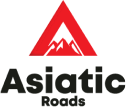
Any Question?
Feel free to call our travel experts.
+977 9851189018, +977 9801089018
info@asiaticroads.com
Other Costs (if Applicable)
| Particulars | Cost per person in US Dollars |
|---|---|
Accomodations
Accomodation (Hotels envisaged or similar)
15 Days From

Any Question?
Feel free to call our travel experts.
+977 9851189018, +977 9801089018
info@asiaticroads.com
15 Days From

Any Question?
Feel free to call our travel experts.
+977 9851189018, +977 9801089018
info@asiaticroads.com
Reviews
In my 2 week stay, John was very professional and took me around to experience all that Kathmandu and surrounding areas has to offer. Sites were seen and many locals were met through John’s network.

Steven Stone
TravellerIn my 2 week stay, John was very professional and took me around to experience all that Kathmandu and surrounding areas has to offer. Sites were seen and many locals were met through John’s network.

Steven Stone
Traveller15 Days From

